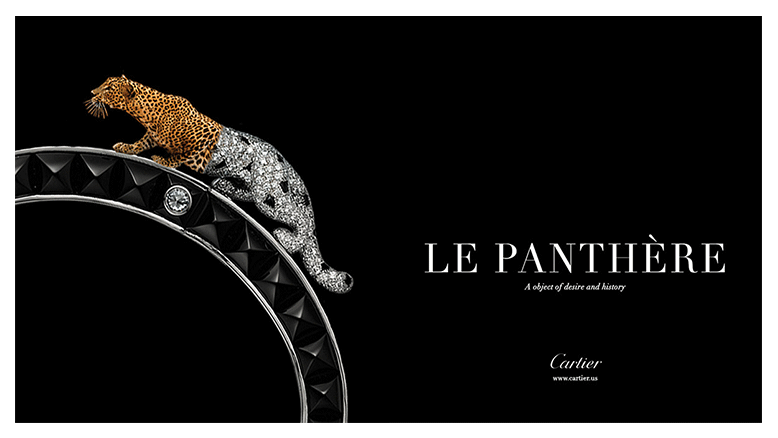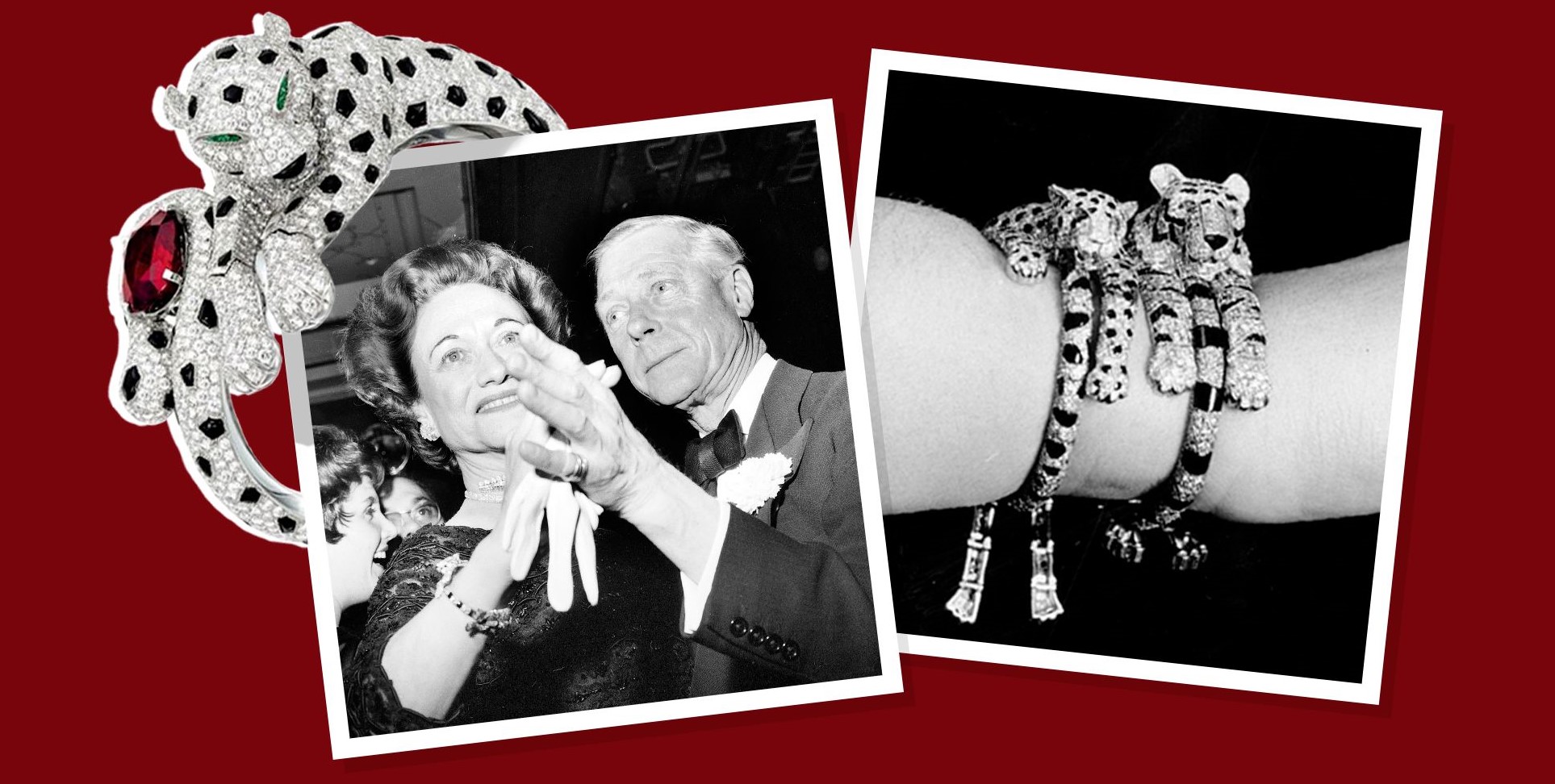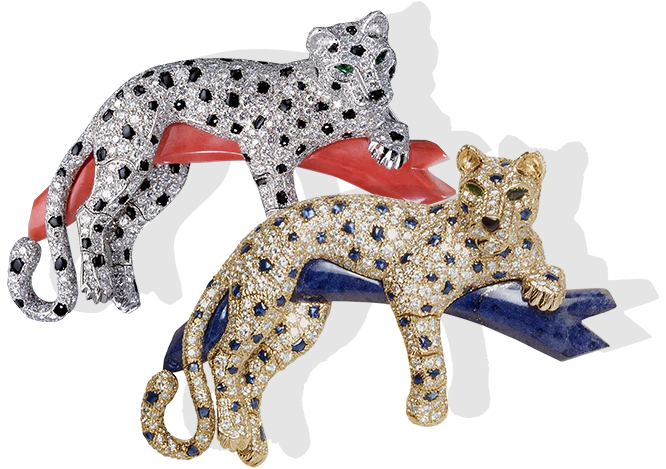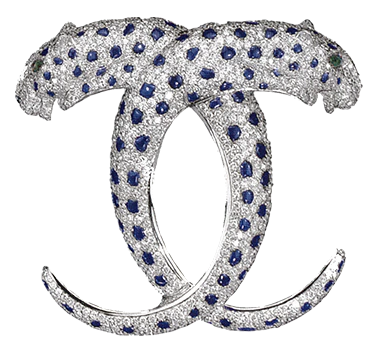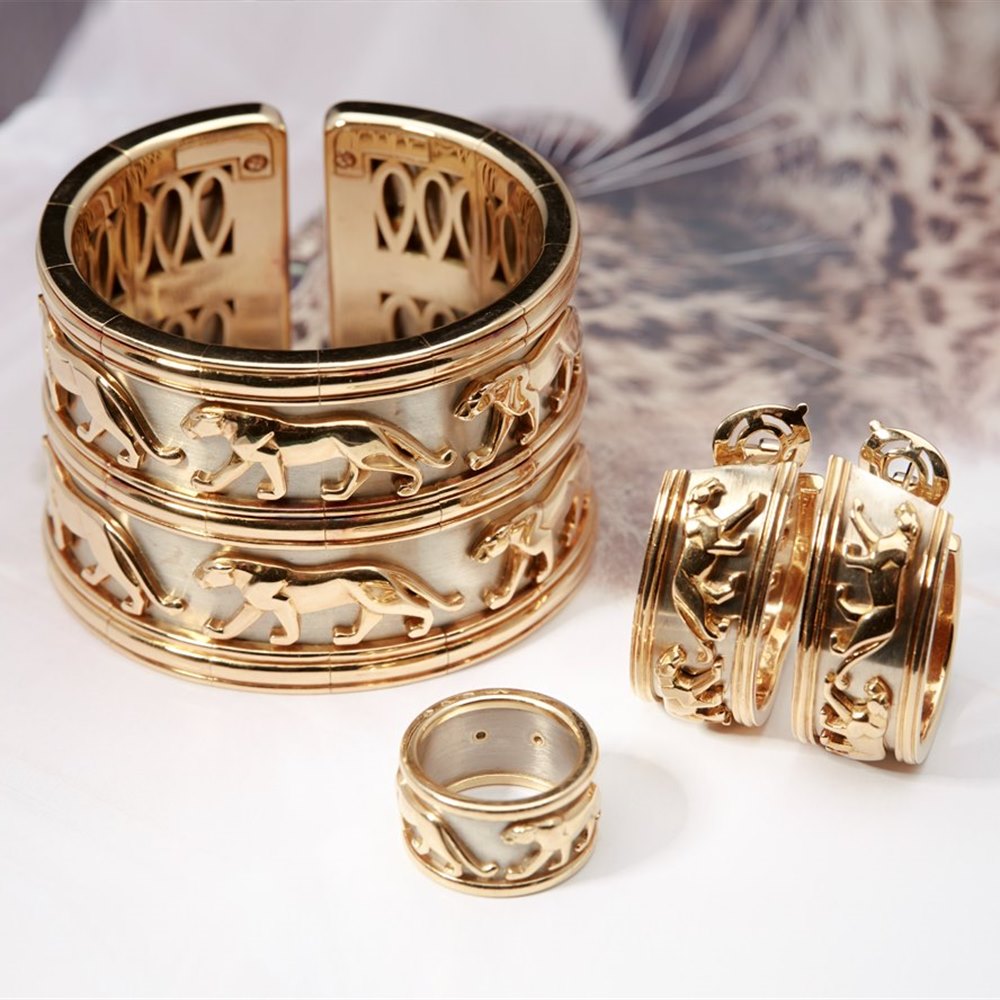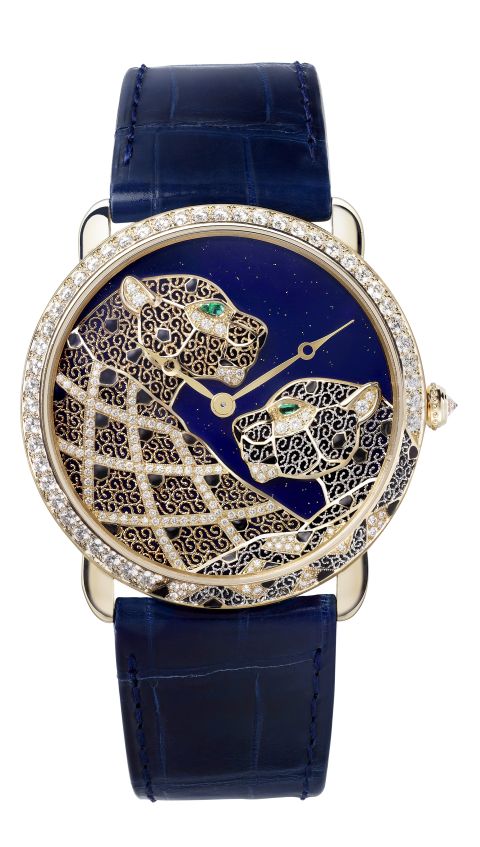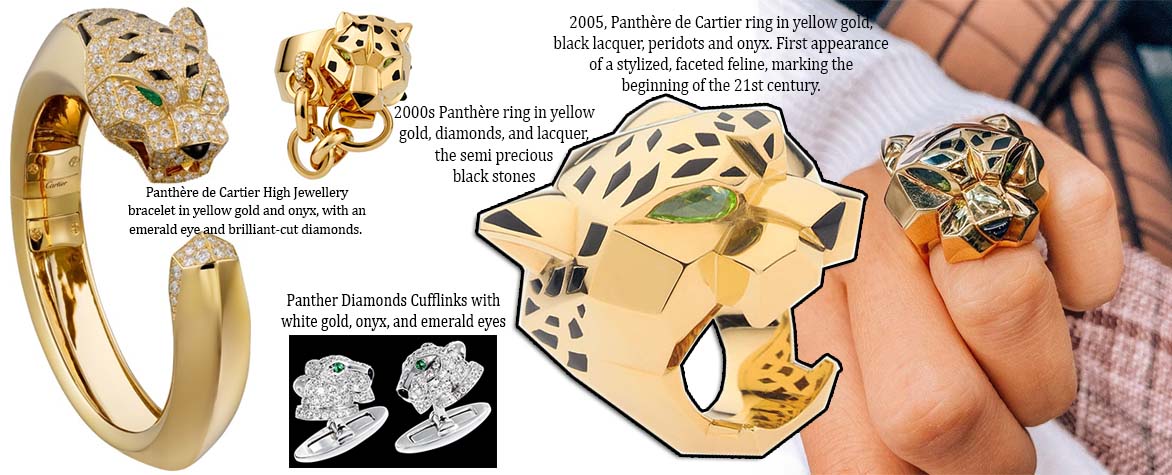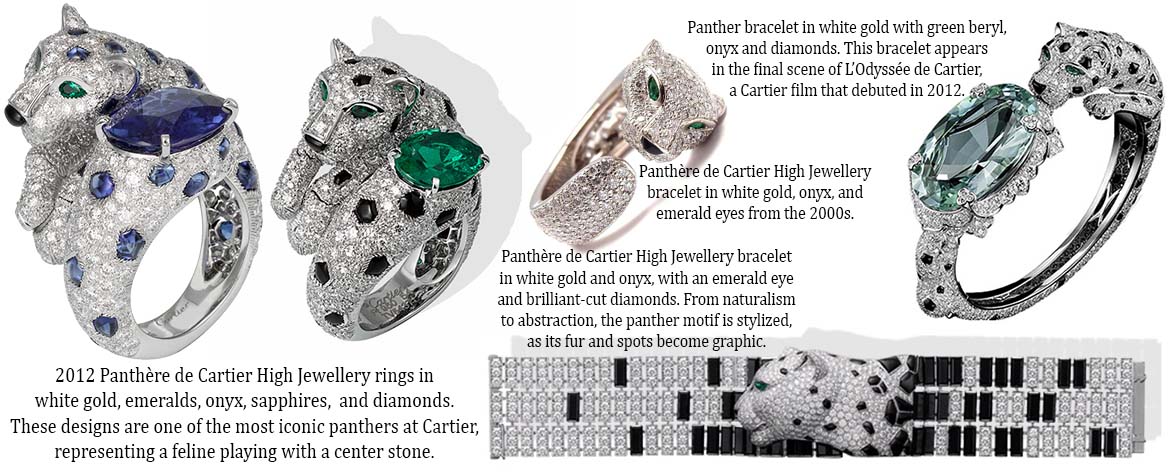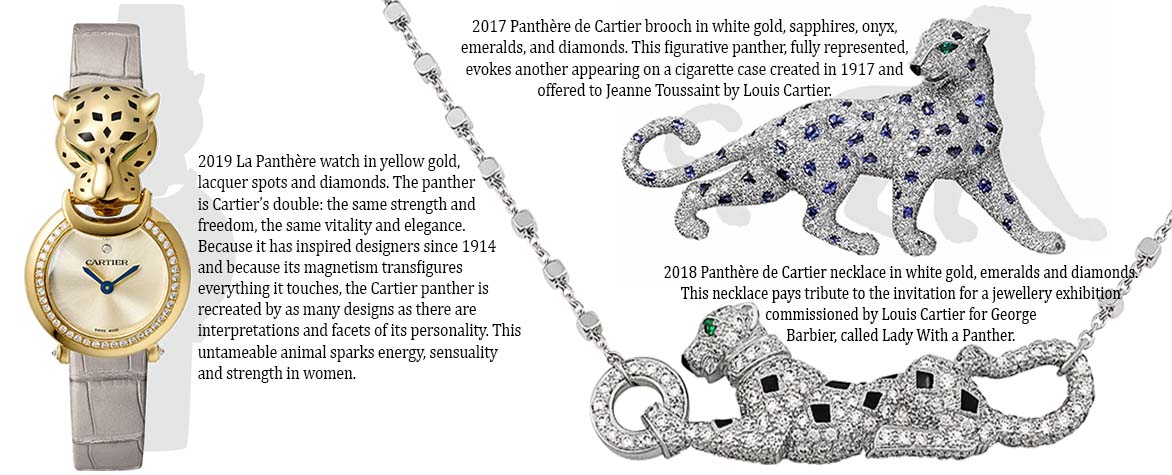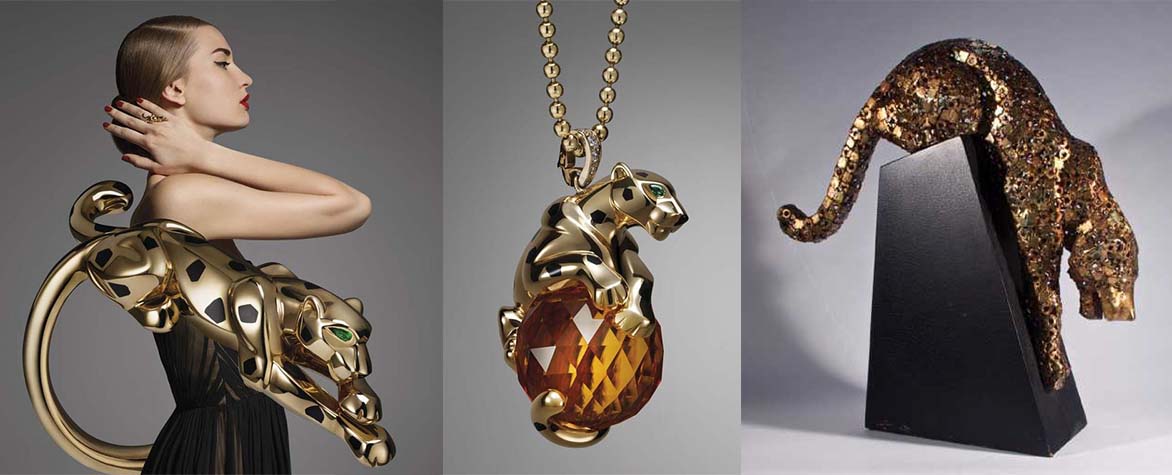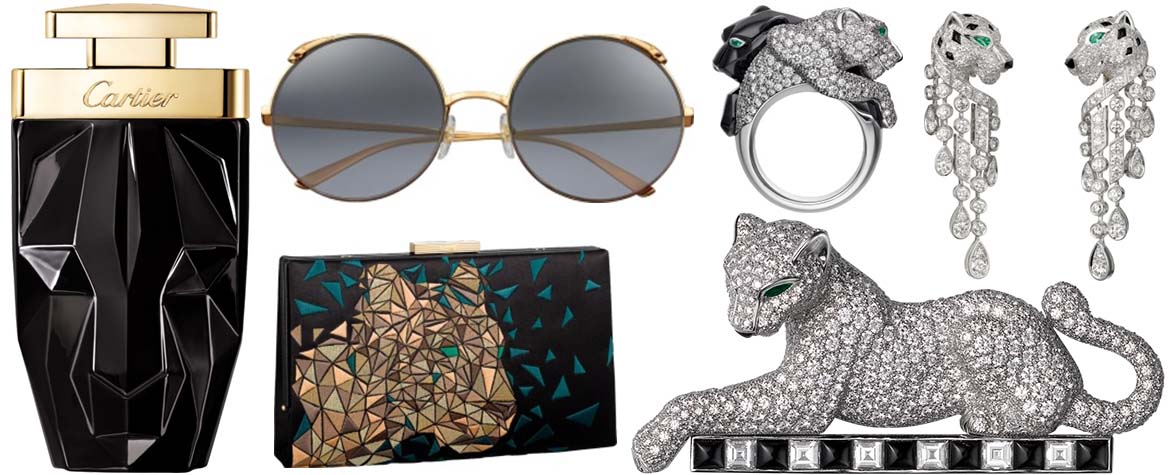Cartier, a name synonymous with timeless elegance and storytelling, brought its legendary Panthère to life in L’Odyssée de Cartier, an epic Cartier commercial a few years ago, directed by Bruno Aveillan. Blending fantasy with heritage, this cinematic journey bridges dreams and reality, tracing the iconic maison’s adventurous spirit across continents, history, and imagination. In this blog post, we delve into The Panthère de Cartier—uncovering how this fierce feline became a powerful emblem of grace, mystery, and the brand’s enduring legacy.
BIRTH OF PANTHèRE – THE DAME à Là PANTHèRE, 1914
The founder of Cartier, the Luxury French jewellery brand, Louis Cartier, commissioned George Barbier to create a watercolour painting of a woman, The Dame à la Panthere, in 1914. Wearing a long necklace with a panther at her feet, the painting became its symbol in no time. Louis Cartier was so captivated by the art that he applied it to Cartier’s advertisements. Around this period, the brand introduced its first animal designs with the panther theme to the public. And the panther theme is often attributed to this painting, The Dame à la Panthere.
Putting a panther on the foot of a woman was shrouded in mystery. But Cartier expert Geo Cramer had a possible explanation: at the beginning of the 20th century, big cats were en vogue for expressing femininity. In fact, the beast served as the ultimate expression of femininity.

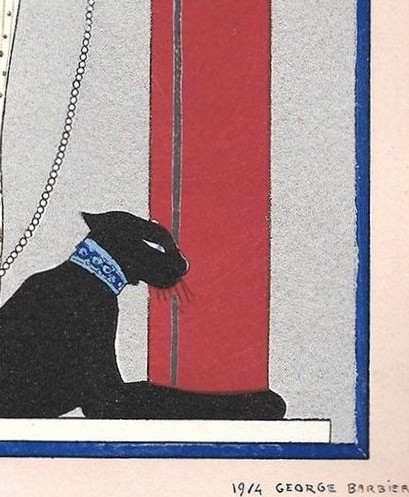
Considering the topic of femininity and big cats, I want to add an insightful observation about the “expression of femininity” here. According to Hinduism, Goddess Durga has nine avatars representing the various forms of women. She is often pictured sitting on a lion or tiger to symbolise her warrior nature. Maa Durga has long remained honoured in India for her victory over the demon king Mahisasur. And the evidence of Goddess Durga-like images dates back to the pre-Indus Valley Civilisation. Therefore, could the Indian goddess have influenced Cartier with the origins of the Panthère designs? Perhaps that’s a topic for a different discussion, and today we are focusing exclusively on the evolution of the Panthère.
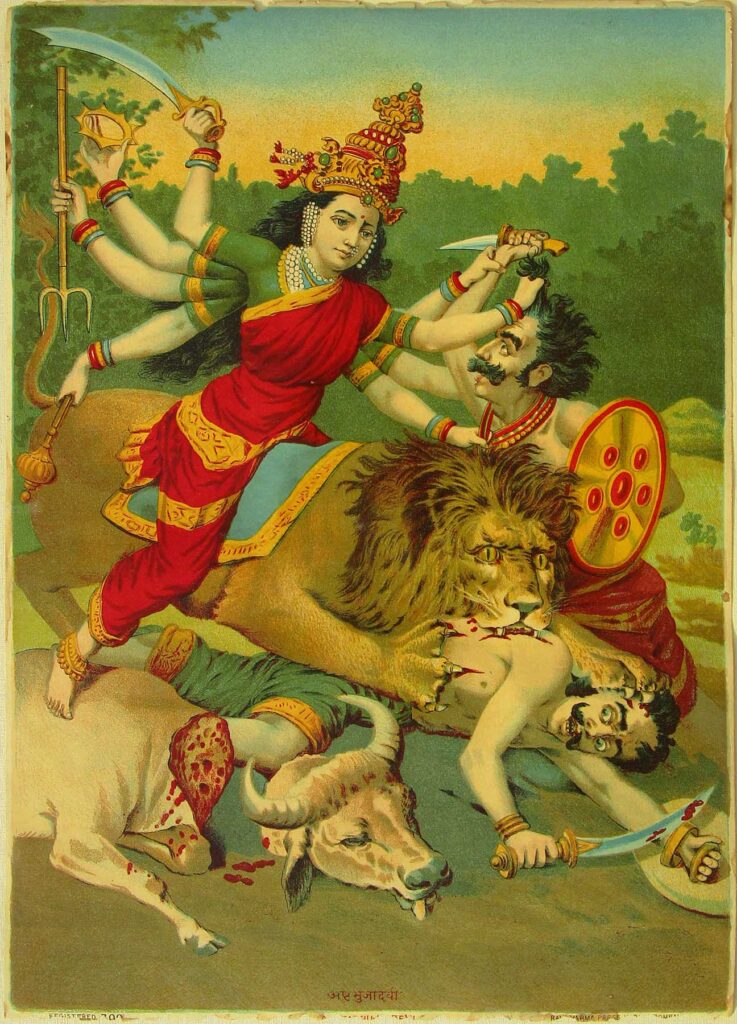

Hindu divinities from the period CA. 750–1200.
THE FIRST PANTHèRE WRISTWATCH, 1914
Later that same year, the first piece of panther jewellery came into existence, a watch designed by the famous French designer Charles Jacqueau that looked like the spotted coat of one of the magnificent felines. The 1914 Cartier wristwatch featuring a motif of panther spots came with a round case in polished platinum, pavéd with rose-cut diamonds and onyx.
Cartier was one of the first jewellers to use platinum in their luxurious creations and was also the first to incorporate a panther motif as a trademark on their exclusive pieces. Since its first appearance on a female wristwatch, the panthère has become an icon and classic symbol of Cartier timepieces. And the emblem of confident femininity, free of all conventions, has given everything it touches an air of chic sophistication.
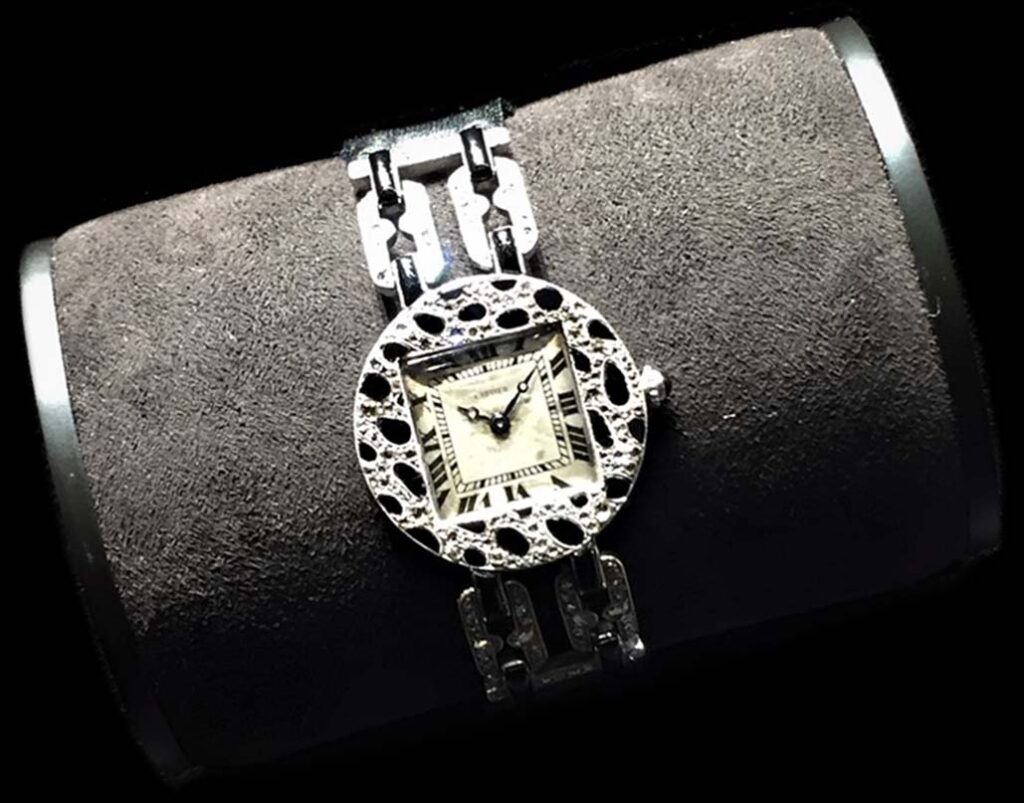
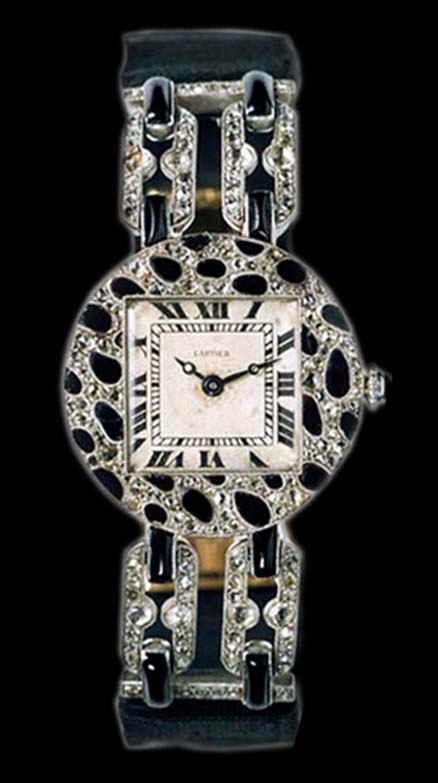
PEAU de PANTHèRE, 1915
A year later, the panther pattern appeared on the second piece. In 1915, Cartier created the first pendant watch with diamond and onyx, which featured the celebrated Peau de Panthère or panther-skin decoration for the brand. Onyx pieces were carved in various shapes to resemble spots on a ground of pavé-set diamonds.


CIGARETTE CASE, 1917
The first comprehensive representation of the feline in onyx and diamonds, standing between two carved emerald cypress trees, appeared on a Cartier cigarette case in 1917. It was a gift from Louis Cartier to his beloved Jeanne Toussaint. He had nicknamed La Panthère in honour of her independent personality. He was so impressed by her charisma and alluring sense of style that he appointed her head of the accessories by late 1917.
For a deeper look into the legacy behind the Panthère, Jeanne Toussaint – L’Odyssée de Cartier, Chapter 1 offers a powerful portrait of the woman who redefined modern jewellery. Directed by Camille Salvan and voiced by Edouard Baer, the film captures her bold vision and the fearless creativity that brought the Panthère to life.
JEANNE TOUSSAINT, 1922 – 1978
Throughout her career at Cartier, Jeanne Toussaint took on an increasingly significant role and ultimately became the creative director of jewellery in 1933. She elevated the panther to iconic status, reigning supreme over the legendary jewellery bestiary with the support of the talented designer Peter Lemarchand, who had joined Cartier in 1927. In 1935, she conceived a collection of yellow gold jewellery with several panthers, including the first panther ring featuring two panther heads.

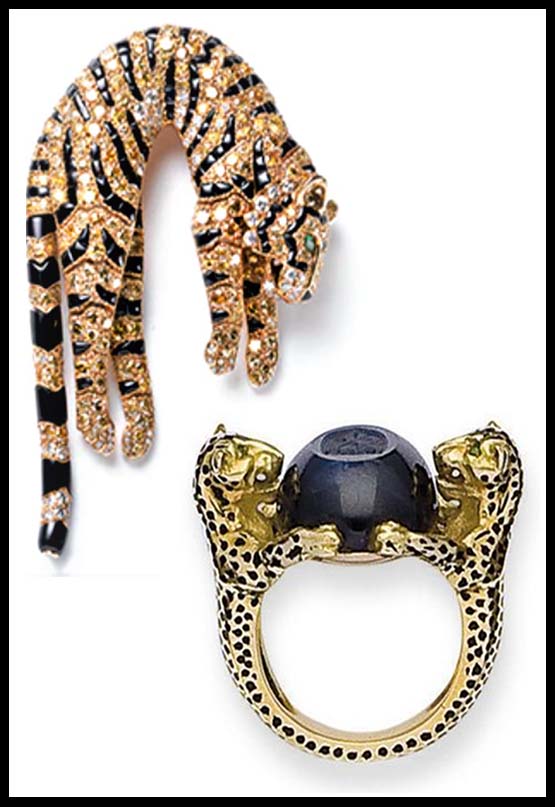
Images: Cartier Archives, Photograph of Jean Toussaint by Baron Adolf de Meyer.
DUKE & DUCHESS OF WINDSOR, 1948
The Duke of Windsor commissioned a brooch with a fierce-looking 3D yellow-gold panther with black enamel spots in 1948. During the following year, the Duke and Duchess of Windsor bought a second panther brooch, which featured sapphire and diamond cabochons set in diamonds. With the Duchess owning the second piece, her interest in the panther never dwindled.
PANTHèRE AMONGST FASHIONABLE SOCIALITES, 1949
Over the years, countless celebrities and high-society figures became enthusiasts of the Panthère de Cartier collection. In 1949, Daisy Fellowes, formerly the director of Harper’s Bazaar in Paris, bought a diamond and sapphire panther clip brooch with the feline in the sheep’s postage marking the order chivalrous of the Golden Toson. Among the other famous panther devotees over the years is actress Maria Felix, fondly called the Mexican panther. Princess Nina Aga Khan acquired a collection of Cartier panther pieces in 1958, ranging from a jabot-pin to a yellow gold bracelet with panther heads worn as earrings and even used as evening bags.
THE 1960s UNTIL THE MID-1970s
Panthers of the early era possessed a ferocious appearance. The 1960s designs with slightly enlarged eyes made the panther appear softer and “almost tamed.” Until the mid-70s, the panthers were entirely handcrafted; whether it was gold or platinum, the metal had to be crafted by hand, so their original purpose was affected by its difficulty. The process of creating an expressive panther was a difficult one. Therefore, by the mid-1970s, the idea was to use casts to construct the cat. Initially, the designs were sculpted in wax, after which a metal cast would be created, followed by the stones embedded in the metal. In this way, the panther evolved from reflecting the jeweller’s work to resembling the wax sculptor piloted by the designer’s sketches. However, there were arguments over this decision, which resulted from the desire to create a more expressive panther.

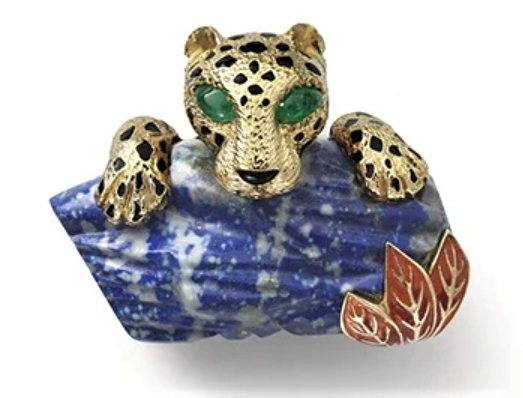


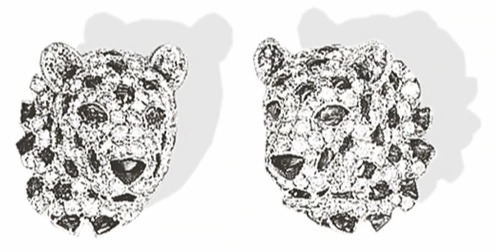
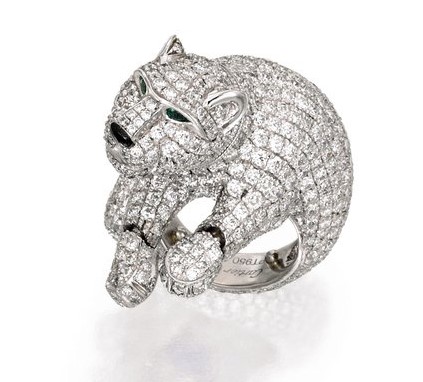
THE PERIOD AFTER 1978
Jeanne Toussaint died in 1978. But the beautiful beast she created for Cartier lives on today and continues to inspire. Later, Alain Dominique Perrin was responsible for the marketing and launch of the new Panthère collection of jewellery, watches, and cufflinks. She created a promotional campaign for the Panthère watch that featured actual Panthers. By the 1980s, the design of the panther had evolved to a very naturalistic design.
DURING THE 1990s
Young Panthers were reintroduced to Cartier’s repertoire in the 1990s, offering a new design approach. The baby panther is characterised by its cuteness and femininity, whereas the adult panther has more independence and fierceness. Customers attracted to the young panthers often have very different personalities. From those attracted to adult panthers because cubs take a significantly different approach to the stone and design. Therefore, many changes occurred during this period for the brand.
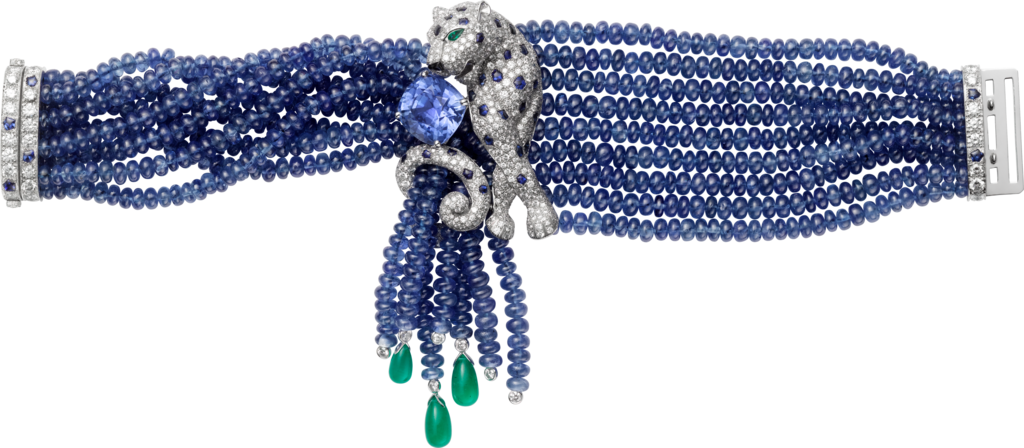
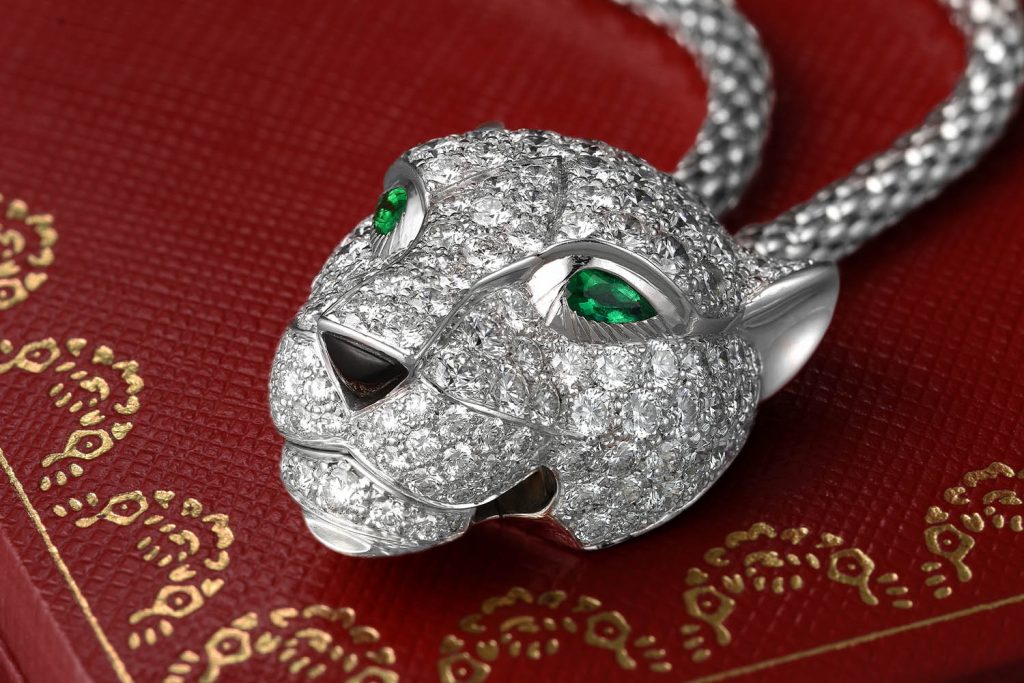
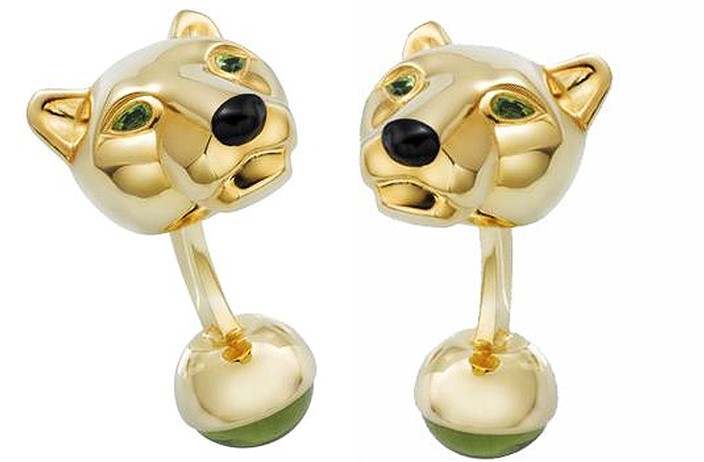
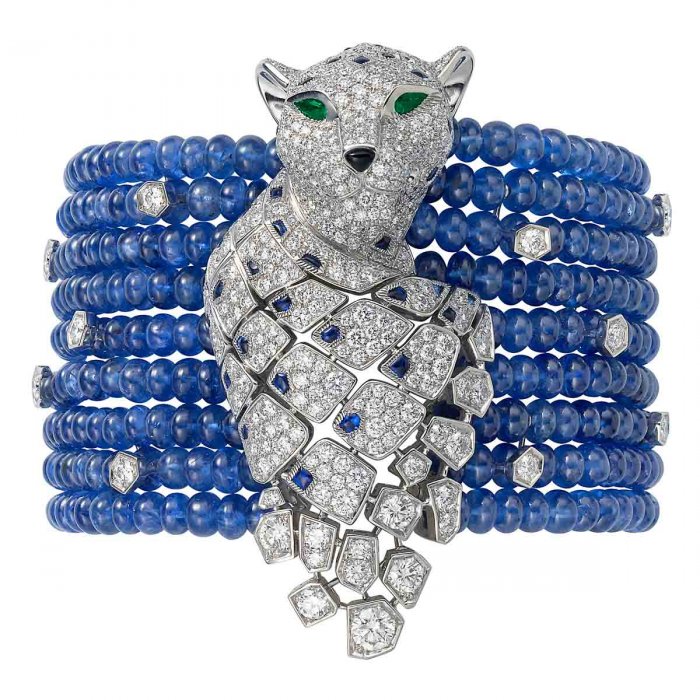
MODERN ERA- 2000s
Over the years, the rendering of the panther has evolved further. Jewellers have appropriated the animal so thoroughly that they feel they can be more experimental in how they depict it. Consider, for example, fragmenting or elongating its body to create abstract effects to make a necklace. Around 2010, a diamond & onyx panther bracelet belonging to the Duchess of Windsor went up for auction at London Sotheby’s. It was the most expensive bracelet and the most expensive Cartier item to be sold at auction then. As part of the celebration of Cartier’s 100th anniversary of Panthère de Cartier in 2014, 56 pieces of jewellery debuted. And an exhibition of Cartier style occurred at the Paris Grand Palais.
TODAY
Cartier has evolved this timeless icon of luxury into more innovative and vibrant designs. It can be fierce, playful, or lovable, displaying all the facets of its liberated personality from one collection to another. As an example, Panthére watches have evolved not only in design but also in technology. In addition to jewellery, Panthére de Cartier now offers accessories like bags, sunglasses, perfume packaging, etc.
Information Courtesy: Cartier Archives

